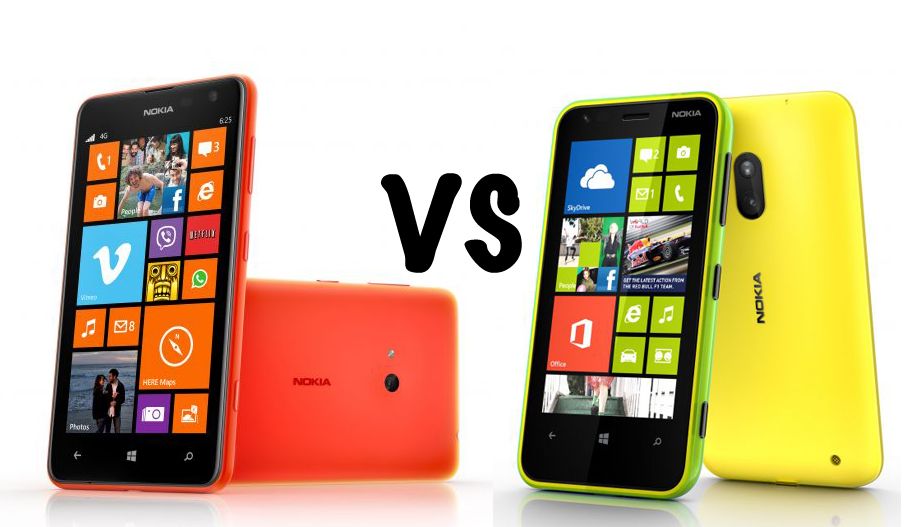Nokia has just announced another new handset, the Nokia Lumia 625. It looks to follow a logical sequential numbering pattern, making it an obvious step-up over the Nokia Lumia 620.
The Nokia Lumia 620 is one of our favourite Windows Phones: it's affordable, it's powerful, it's a device you can get on a budget without feeling you're going to miss out. In short, it's an ideal smartphone for those who want the Windows Phone 8 experience but don't want to spend a fortune on it.
The Lumia 620 is also only seven months old. So is the Nokia Lumia 625 a replacement device, or is it something else entirely? Simply put, what's the difference?
1. Display
That's right, the display is the story here. Nokia is pushing the boundaries of Windows Phone 8 displays with a 4.7-inch IPS screen, compared to the 3.8-inch display of the Nokia Lumia 620. That really makes it a very different device, despite the same numbering.
That said, the resolution sticks at 800 x 480 pixels as it was before, giving it a low 198ppi - probably the lowest pixel density of any smartphone on the market at present. That means that despite the size, you won't benefit from increased detail, but you'll be able to get more Live Tiles on your Start screen. Big is beautiful, but in this case, it's also budget.
2. Design and build
Although the fun design, with bright colours, persists with the Nokia Lumia 625, that 4.7-inch display means the body swells. The Lumia 625 measures 133.2 x 72.2 x 9.2mm compared to the Lumia 620's 115.4 x 61.1 x 11. It might be thinner, but it's a much larger device overall.
There's additional weight too. While the Lumia 620 was a light 127g, there's additional heft to the Lumia 625 at 159g. It's heavier than the Lumia 925, which is only 139g. Those additional Gorilla Glass-clad inches certainly weigh it down.
3. Connectivity
Part of the Nokia Lumia 625 story is 4G: the handset now comes ready and able to give you fast data on the move, stepping up over the 3G offering of the Lumia 620. Given the low price, the Lumia 625 should get you that fast, big-screened, experience without the expensive contract.
Additionally, the Lumia 625 offers Bluetooth 4.0 LE, a move up from the BT3.0 of the 620, designed to be compatible with low-energy devices, such as sports sensors.
4. Core power
The Nokia Lumia 625 has a dual-core Qualcomm Snapdragon S4 chipset, clocked at 1.2GHz. It's a modest change from the dual-core 1GHz offering of the Lumia 620. From what we've seen, the experience is much the same when it comes to using the phones.
There's only 512MB of RAM in support in both devices, along with 8GB of internal storage, modest specs for these mid-range devices. Of course, both will support microSD expansion up to 64GB.
5. Battery
Explaining away some of the extra weight is a higher-capacity battery: the Nokia Lumia 625 sees a jump up to 2000mAh over the fairly low capacity of the Lumia 620, which only offers 1300mAh. It's also worth noting that the 620 has a removable battery and the 625 doesn't.
The Lumia 625 is promising 15 hours of 3G talk time over the 9.9 hours of the 620, so on paper at least, it looks promising, but you won't be able to swap it out for another battery on busy days.
What's in a number?
So despite being numbered in what looks like a sequential fashion, the Nokia Lumia 625 and the Lumia 620 are very different devices. The 625 is not a upgrade of the 620, even if both want to target those looking for good value for money. The Lumia 625 is going to cost around £240; the Lumia 620 is £157.50.
The Nokia Lumia 625 offers the big-screen experience and 4G which is the real draw here. If you want that big Windows Phone experience, then this is where you'll find it. If you want the a device that's compact, affordable and with the advantage of a swappable battery, then the Lumia 620 is still a great choice.
READ: Nokia Lumia 625 hands-on: 4G and big screen on a budget

